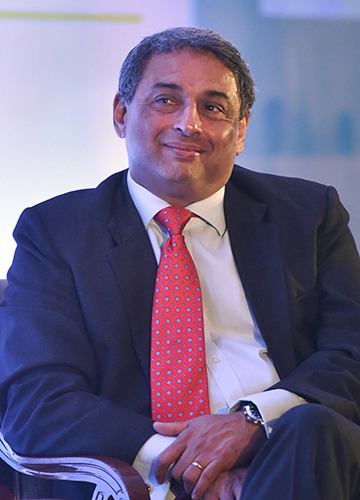After many rounds of lockdowns and business recovery, India Inc has made it clear that beyond stimulus, beyond loans and beyond cash transfers, the single most important measure that can pull India back from the brink of a disaster is vaccination. So it did not come as a surprise when industry veteran T.V. Narendran, global head of Tata Steel, one of the biggest steelmakers in the world, made a clarion call for appointing a vaccine minister. In his first interview after taking over as president of the Confederation of Indian Industry, Narendran spoke about vaccines, the importance of technology as a geopolitical and economic strategy and how rural India could lead us to normalcy. Excerpts:
If a third wave of the pandemic is inevitable, how can the government and industry mitigate the pain points better?
Vaccinate. It reduces the chances of getting the virus and if you do get it, the impact is lower. That is step one. Step two is to make sure that we continue to build up infrastructure and prepare hospitals for the surge. There are multiple dimensions to the preparation that we need to do, like oxygen, but the most important one is making sure that more and more people are vaccinated.
How different is the economic scenario now compared with the unlocking after the first lockdown?
Wave one had a significant economic impact. But in wave two, it was more of a humanitarian crisis than an economic crisis. Wave two has been more severe on the psyche of people, because almost everyone has been directly or indirectly impacted. We did not have the same economic impact because we did not have a complete lockdown as we had in wave one. In wave one, the lockdown was sudden, so all of us were underprepared.
In wave two, even though there were local lockdowns, the industry was better prepared. For instance, the industry has created facilities to take better care of migrant workers so that they did not go back. Factories were safer than the communities outside, because strong protocols were in place.
The global economic conditions have also changed. Last time, globally, when everyone was dealing with a pandemic, the only country which had started recovering was China. This time you are already seeing the US recovering, Europe starting to come out and China back to pre-pandemic levels. A lot of stimuli has been announced by governments. So the global economic sentiment is more positive than it was when we came out of wave one.
In India, the rural markets led us out of wave one. This year we hope the same will happen. I think we are seeing some signs that the rural markets are not as bad as we feared a few weeks ago. With a good monsoon, we hope it will once again lead the recovery back to normal growth.
Business recovery seems swift, but certain sectors have been terribly affected, like hotels and aviation. Do you think any further stimulus package should be there on a sectoral basis?
The high contact sectors have been significantly impacted—aviation, restaurants, retail, travel and tourism. These are huge employment generators. They have already suffered for more than a year. The larger companies will survive, but the smaller ones will struggle. So we [need to] support them with specific initiatives which can help them, like bringing aviation fuel under GST and encouraging people who have been vaccinated to travel within India by giving incentives on leave travel concession.
We also have to make sure that the consumption economy is not impacted because people have spent more money than they had planned for medical expenditure. Can we have a 3 per cent GST cut for six months on consumer goods? Can we look at increasing the allocation for NREGA so that more money can flow to the rural economy? The other sector which struggled last year and is still struggling is MSMEs. So how can we continue to help them?
Perhaps the government would also like to move from being a service-oriented economy to a manufacturing economy.
It is important. A lot of the services jobs are in urban centres, whereas you need to create jobs across the country. Will it be easy? Certainly not, there is a journey to go through. The IT sector took off because we have a very good telecom network, so you did not have to navigate through the challenges of Indian roads and ports. That is why we have been encouraging the government to spend more on infrastructure. If you want manufacturing to be set up in India, we need to make sure that the competitiveness is not diluted outside the factories—you can have a world-class factory, but outside, they depend on the quality of the roads, the quality of the ports and so many other things.
The journey to having manufacturing from 15 (per cent of the GDP) to 25 (per cent, the government’s stated goal) is not easy, but it is essential. Otherwise, we will struggle to create jobs across the country.
Forecasts predict a post-pandemic boom.
When large economies like the US and China continue to spend their way out of trouble, the rest of the world will benefit. That is the reason for optimism. In India, if we get our reforms and policies right, and leverage the demographic advantage we have with our technical skills, we can create opportunities.
India has traditionally seen consumption-led growth. But now the government is spending a lot more on infrastructure than in the past. This infrastructure push and infrastructure-investment-led growth is also a force multiplier. So, if consumption-led growth continues and you have on top of that an infrastructure push, I think we are well-positioned to go up to the 9 per cent growth needed to hit the $5-trillion economy by 2025.


